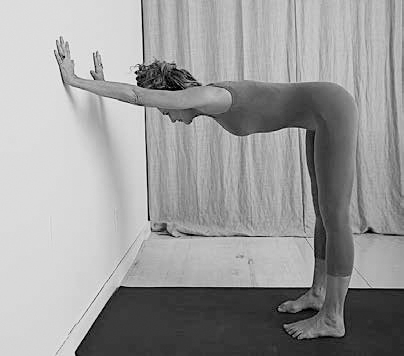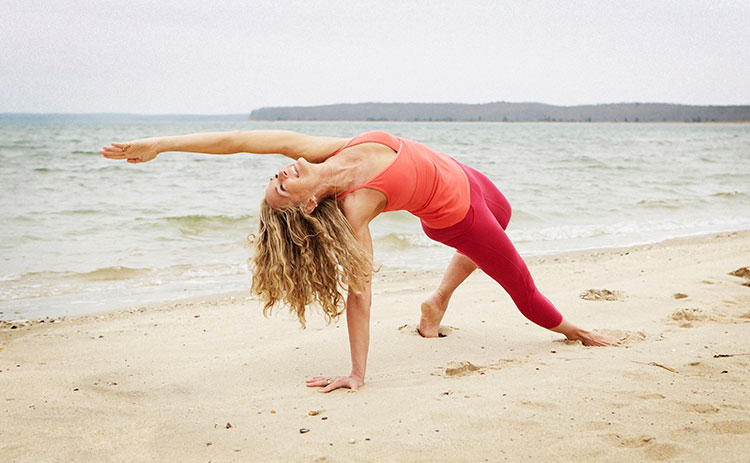
The restorative power of yoga inversions
—
The Buddha said, “I am not enlightened, I am merely awake.” What does it mean to be awake? Most of us spend our lives in relative states of “un-consciousness.” Sometimes we undergo a big, dramatic, once-in-a-lifetime awakening — such as a near-death experience — or we can occasionally experience subtler awakenings, such as hearing a story that resonates deep in our beings and creates a shift in consciousness.
But why leave “awakening” to some external act or story?
For me, yoga is a daily practice that gives us the tools to wake up, and in waking up, to overcome the obstacles that exist between ourselves and freedom, joy, and gratitude.
The pillars of yoga
Three of yoga’s pillars are asana (postures), pranayama (breath work), and meditation. These practices create clarity, in our bodies and our minds. When you practice asana — or postures — you observe your physical habits: the way you stand in Mountain Pose, the tuck of your pelvis, the collapse of your chest, the position of your head. When you learn to align yourself, you begin to notice how your habits can take you out of balance, and you begin to move towards physical symmetry. For instance, if you’ve sat at a computer for your whole career, your shoulders are rolled forward and your neck juts out. If you’ve carried babies on one hip, chances are that your pelvis is out of line.
The practice of yoga trains the brain to “wake up,” to be in the present moment.
It teaches you to observe what is happening right now, both physically and mentally. The practice of yoga demands that we stop and become aware of our mental and physical habits.
As you observe your physical habits, you’ll begin to notice your mental habits as well — the perpetual dialogue that is defining who you think you are, and keeping you on the hamster’s wheel, going round and round. All that chatter obstructs the true you. By spending time with our physical and mental patterns, we become conscious and mindful; gradually we may become able to smile, to let go, to change. Our bodies are intelligent — more a source of direct truth than our minds — but we rarely listen to the wisdom that’s buried in them.
When I discovered yoga in my late twenties, it was a revelation, a true “awakening.” I was a fashion model then; physically, I looked beautiful, but inside, I was a dilapidated house where no music was playing. I was insecure and desperately trying to be the woman I thought my then-husband would love. Thinking other people are better than you — whether it’s because you’re convinced they are smarter or prettier or more successful — is a habit, a form of self-hatred. It’s also a waste of energy. I cringe when I think about how jealousy brought forth my ugliness. I wasn’t practicing yoga’s first ethical rule of ahimsa, or “non-harming.” I was harming myself.
Ironically, I did experience a literal “bolt” of awakening. Miserable with my life, I went on a canoe trip with my five brothers in Algonquin National Park in Canada. During the trip, a huge storm arose; all of us were struck by lightening. When I was in the arc of the electric current, I remember thinking, “I am in nature, I am with my family and I have known love — it’s O.K. for me to die.” That was a life-altering change in perspective. As terrifying and painful as it was, the experience has brought me to a new level of calm (except during storms). To have experienced what I thought was an imminent death, was an awakening.
There were two messages the strike taught me: this precious moment is all we have, and we shouldn’t take life so seriously.
Smaller, everyday and possibly equally as profound experiences of awakening to new perspective can come from a passing word, a book, a song, a class, or a poem. The experience of failure, betrayal and disease can be powerful and painful teachings that could lead to an awakening. As Rumi says in his poem The Guest House: “The dark thought, the shame, the malice. Meet them at the door laughing and invite them in. Be grateful for whatever comes, because each has been sent as a guide from beyond.”
Yoga Inversions
Yoga tells us that that when our worlds get turned upside down, we may as well turn ourselves upside down. Poses called “inversions” allow you to see life from a different perspective. Inversions such as Handstand, Headstand, Forearm Stand, Shoulderstand, and even Downward-Facing Dog, sharpen and focus the mind. You can’t be obsessing about your insecurities, or worrying about your To-Do list when you’re in Handstand. You can’t be tending to emails or Instagramming while practicing Headstand.
Inversions are just the thing when your mind is spinning in an obsessive pattern and won’t give you any peace. They’re wonderful postures to do when you’re feeling mentally or physically stuck. I spent much of the last 16 months writing my new book, Yoga for Life: A Journey to Inner Peace and Freedom, and I can tell you that “stuck” now has a whole new meaning for me. Writing the book was “going upside down” for me. (I practiced a lot of inversions during that time!)
If I miss a flight and am ready to explode, I’ve been known to go into a bathroom in the airport and kick up into Handstand. Or if I am bored at a dinner party, I’ll find a way to excuse myself and sneak in an inversion in the next room. I use them when I need an attitude adjustment, that’s my secret.
The following sequence will give you a taste of inversions. Even if you can’t balance on your hands or arms, there are many inversion poses that place your head below your heart and create similar benefits. They increase presence of mind and help to optimize the pineal, pituitary, and thyroid glands to create balance. Headstand and Shoulderstand can also relieve constipation (which can be a physical manifestation of being “stuck”).
Relax and awaken to what is unfolding in the present moment.
Noticing when you are not present is the first step towards unveiling the beauty that is waiting beneath the chatter.
Below you will find a sampling of yoga positions from Colleen’s new book, hot off the presses – Yoga For Life: A Journey To Inner Peace And Freedom. For more teaching, life musings and inspiration click on over to colleensaidmanyee.com and order yourself a copy!
[Editor’s Note: Many inversions are advanced positions. If you are inexperienced, it is recommended to do these in the company of an instructor. Potential contraindications for inversions include high blood pressure, glaucoma, menstruation, and pregnancy.]
Supported Downward-Facing Dog (adho mukha shvanasana)
Have a block handy. Fold into child’s pose (balasana), and reach your arms actively forward. Keep your hands and feet where they are, tuck your toes under, and lift your knees off the floor, pulling your hips back until your arms straighten. Then place the block on the floor at one of its three heights (low, middle, high), positioned under your forehead. Support the head in such a way that the ears are aligned between the arms. This is an inversion in which all four of your limbs are on the ground, so it doesn’t provoke much fear. But it can still be disorientating because you’re upside down. Stay in the pose for ten breaths. Then walk your feet forward and stand at the front of your mat.
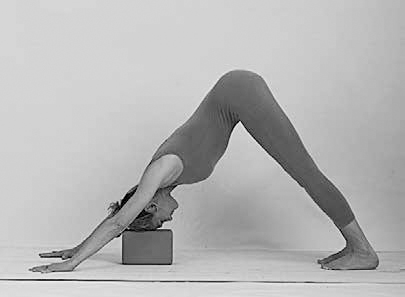
Handstand Preparation (adho mukha vrikshasana variation)
Press your hands against a wall and arrange yourself into a ninety-degree angle — arms and torso parallel to the floor (ears between the arms), legs perpendicular (so the heels are directly below the hips). Look at the floor and stay for five breaths. Remain here or go into…
Handstand at the wall (adho mukha vrikshasana)
Approach this pose from downward-facing dog, with your hands on the floor at shoulder width, about four inches away from the wall. Step your dominant leg forward, knee bent, and then on an exhale, swing the straight leg high into the air while pushing off the bent leg (a). You may not get all the way up, but the attempt will focus your mind. This is the safest of the inversions because there’s no weight on your neck and head. If you make it into handstand (b), stay for five breaths. Then come down with an exhale and sit on your heels.
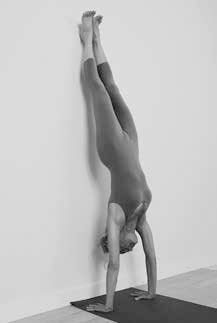
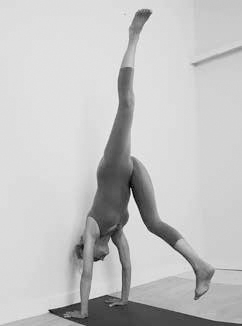
Learn more at colleensaidmanyee.com
You may also enjoy Best Self Yoga Flow for Flexibility and Relaxation with Carter Miles
